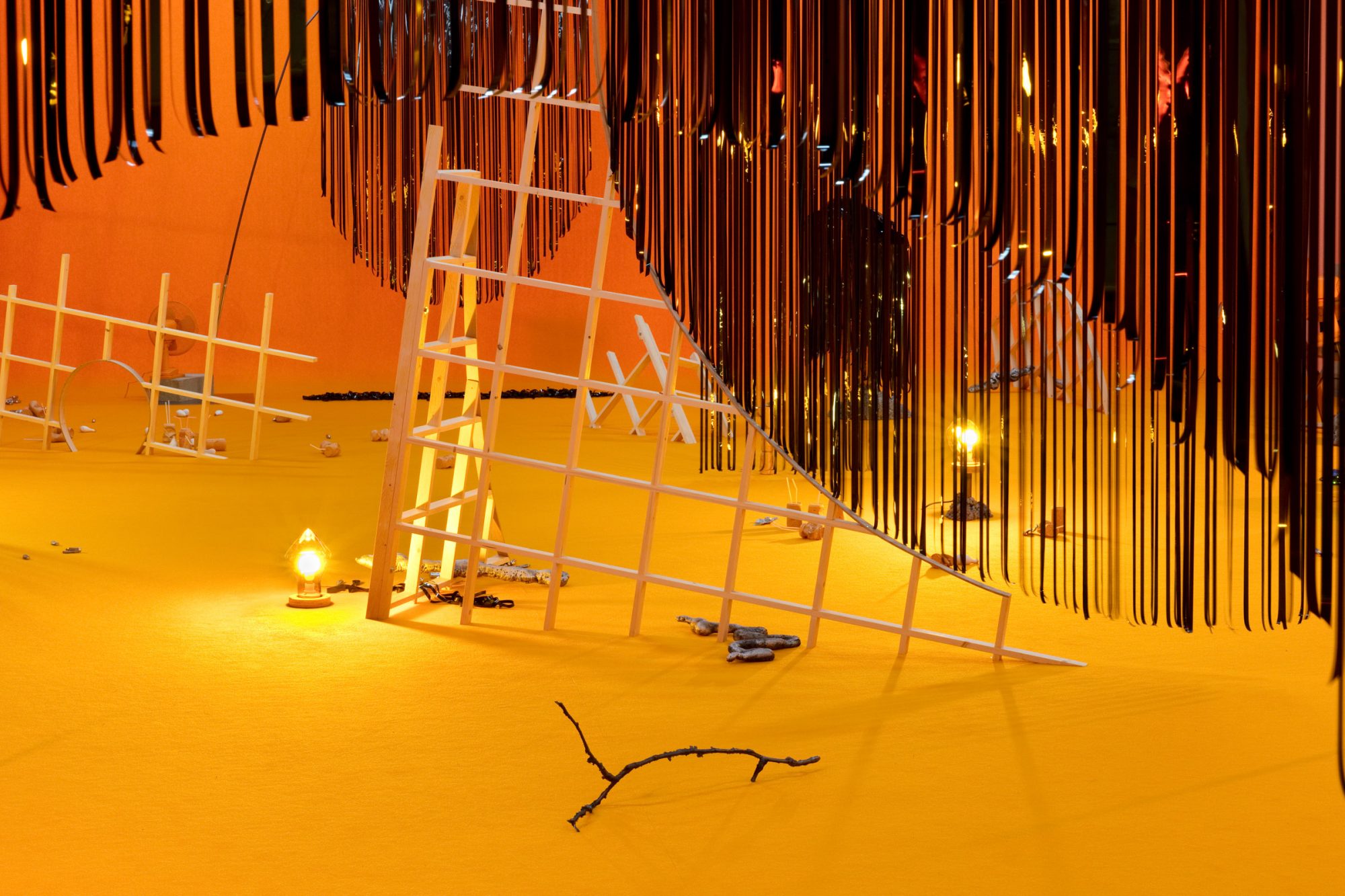Museum Boijmans van Beuningen / Sensory Spaces #13
9th February 2018 – 26th May 2018
Solo exhibition – New commission
Commissioned by Museum Boijmans van Beuningen
Title: Liquid Landscape (2018)

FIELD work – sculptural installation with
quadraphonic surround audio, programmed light and wind
Duration 10:12 mins looped with 2 min pause.
Dimensions variable
The fringes of a hurricane brush into London creating an unusually warm day, with moist air and the smell of the sea. The atmosphere of a powerful tropical ocean in the centre of the city sits awkwardly against the October day and the sulphurous colours of autumn leaves – an unseasonal, interloping climate creating an unstable and disorientating flickering between states. This climatic instability, and it precarious nature, is coupled with material gathered from research in Rotterdam mapping ‘pockets of wild space’– another watery in- between. A quadraphonic audio score constructs a materially active liquid landscape, composed from field recordings and sounds generated from materials found in situ. The physical space of the work is enveloped with orange carpet, on top of a subtly sloped floor that is gently disorientating. The lighting responds to the audio – fluctuating and flickering, the fans turn on and off, the curtains of VHS tapes move. Objects cast in metal and concrete populate the floor as if left behind by the tide.
“…this is how Hardy usually sets to work: she begins with a mapping process, going in search of places and pieces of land that in some way are situated somewhere ‘in between’. Places that have been forgotten and no longer have a clear function, which she calls ‘pockets of wild space’. This is where she collects materials, sounds and stories; building blocks for her new urban narratives. Her inspiration comes from walks through the East End, a part of the city that she has seen change in the last few decades… and from literature too. During our walk she talks about her favourite books and authors – Concrete Island by J.G. Ballard, Remainder by Tom McCarthy, The City & The City by China Miéville and pretty much everything by Haruki Murakami. What she recognizes in these books is the feeling that other versions of reality exist alongside our tangible reality. For instance, we can all share the same city, but at the same time we have created our own worlds, some of them totally invisible to others. The city is a place that is unique to each of us, where concrete, visible facts – in the form of buildings, streets and people – merge with reminiscences and fictional stories, including the things we make up about our own lives…
…she experiences the city as an entity that is continually in motion and transforming, leaving behind all kinds of materials, sounds and experiences in different places, like a sea which ebbs and flows and washes all sorts of things on to a beach and sweeps them away again. Hardy compares locations like these to the soul of a city, ‘a mental space that perhaps corresponds to the furthest reaches of our consciousness’. This is where the remnants of urban life collect; this is where unprocessed experiences and emotions pile up.”
Nina Folkersma, 2018
